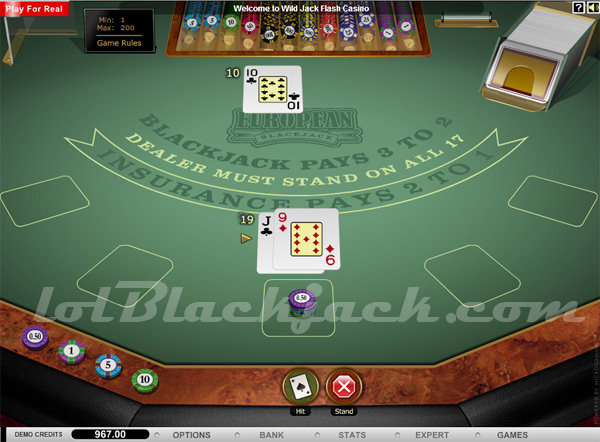Hi-Opt 2 / High-Opt II Blackjack Card Counting System
Hi Opt II is another card counting system used by advanced blackjack players. Like the Hi Opt 1 system, Hi Opt 2 is the second version of the highly optimum (efficient) systems. This one takes a little bit of work to get used to and provides slightly better odds than the other highly optimal card counting system. If you are planning on becoming a professional card counter and blackjack player, this method should be studied a little.
One word of advice: Practice the Hi-Lo or KO card counting systems before using the Hi-Opt II method. Hi-Opt II has much more work involved but it truly doesn't give you that much more of an edge. That small edge is golden when you are used to counting cards and trying to maximize the efficiency of your odds though.
Difference between Hi-Opt II and Hi-Opt I
The major difference with Hi-Opt II is some cards are worth positive 2 or negative 2 count points per card. It is harder to keep track because you also have -1 and +1 valued cards to also keep track of. Another difference between the two systems is that you are counting the 7 and 2 point cards where the Hi-Opt I card counting system doesn't. Both systems are balanced, meaning that when you start your count off at 0 at the beginning of the deck, you should have a final count of 0 at the end because the negative and positive counted scores cancel each other.
Hi-Opt II Card Counting Strategy
As with all card counting strategies, Hi-Opt II begins with the memorization of basic strategy. Basic strategy is a list of the "correct" moves to make for every combination of dealer hands to your hands to give the greatest mathematical edge. This edge will still not beat the house though, but this fine tunes your odds and lowers the house edge as low as possible. Next you implement your Hi-Opt II system and this will be the factor that beats the house edge when done successfully.
The next part of the strategy is to memorize the table below to become a Hi-Opt II card counter. This is one of the hardest systems because of all the different cards and count points to keep track of. In the Hi-Opt II count table below, each card drawn corresponds to a count point. You start your count off when the deck is shuffled and the first card is dealt. You not only need to watch what cards you have, you also need to count the cards that the dealer has and everyone else's cards on the table in order to get a good prediction of what cards are still left in the deck.
| Card Value | Points |
|---|---|
| 2 | +1 |
| 3 | +1 |
| 4 | +2 |
| 5 | +2 |
| 6 | +1 |
| 7 | +1 |
| 8 | 0 |
| 9 | 0 |
| 10 | -2 |
| J | -2 |
| Q | -2 |
| K | -2 |
| A | 0 |
So when you see a card, for example a 5, then add +2 points to your count total. If you get a ten card, then subtract -2 points from your count and so on. When the entire deck is used up, your count should be 0 as Hi-Opt II is a balanced card counting system.
When to Bet in Hi-Opt II Card Counting
It is ideal to bet when many of the smaller cards are gone. A lot of high valued cards mean that your odds improve and this is the whole purpose of card counting by using the Hi-Opt II system. Therefore when many small cards are played, your true count becomes a large positive number. The higher this number, the more your edge increases and the more the blackjack house edge decreases. So it makes sense to bet more and often. On the other hand, a large negative running count means there are fewer ten cards and more small stiff cards in the deck, which decrease your edge and it makes sense to contract your betting. Card counting is great for indicating swings in "good" luck.
We also need to recall an important piece of information. The actual true count is the one that you are counting in the game. You need to pay attention to the running count. You can calculate and find the running count by taking the true count and dividing that number by the number of decks in play. For example, a true count of +4 in a 4 deck game has a running count of only +1. So you need to make your betting decisions based on your running count.
Also, the aces have a zero count in this system but this is something to watch out for. The real strategy says you need to make some very small changes to the basic strategy to account for the aces not being counted. You still need to keep track of how many aces are being played as well but that blackjack topic is extremely advanced and involves some mathematics.


 US Players and Credit Card Deposits Accepted!
US Players and Credit Card Deposits Accepted!




